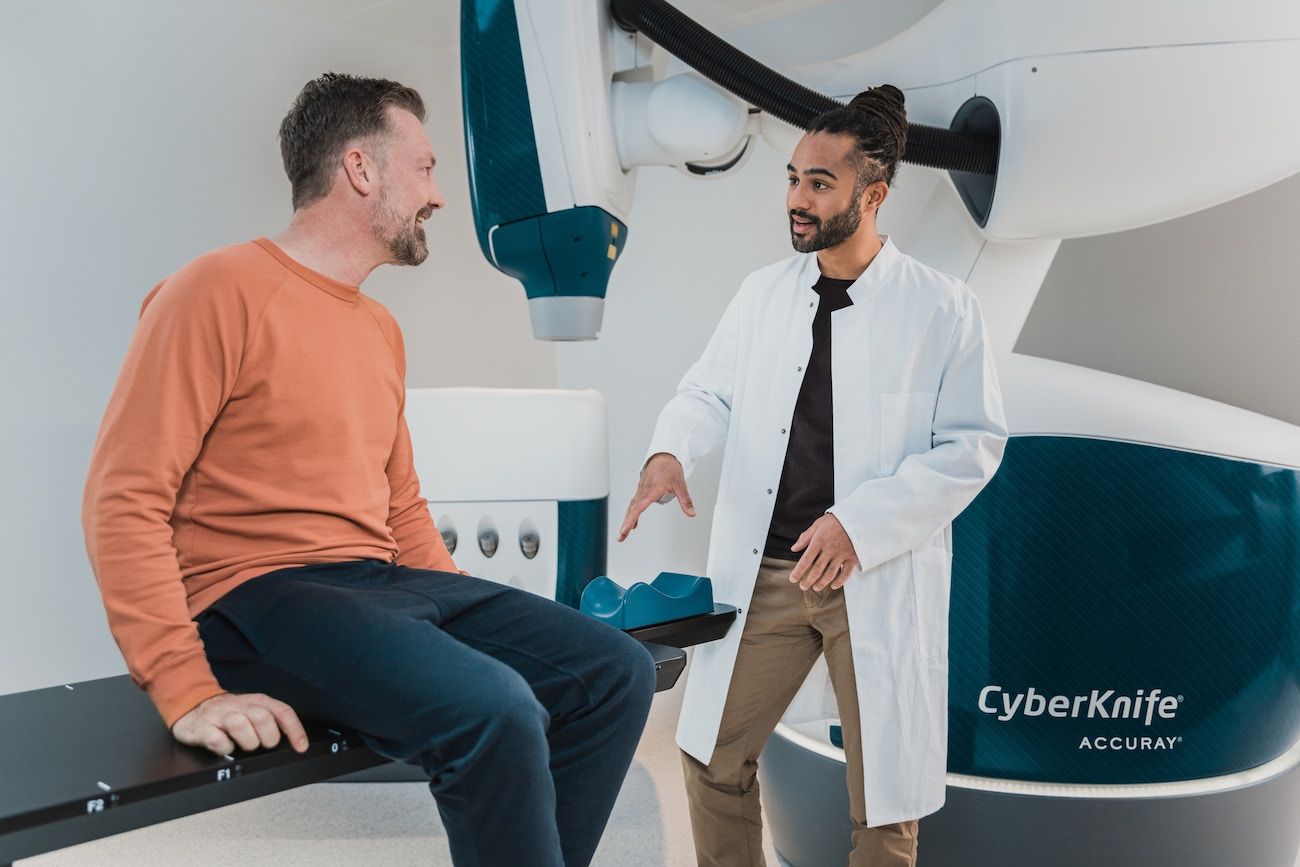Share
18 Oct. 2023
#healthcare #review #rating
The Power of Reviews and Ratings in Healthcare

Specific details patients include about their interactions with doctors, nurses, and staff help gauge how welcoming and supportive a clinic's culture is. Little things like friendliness at check-in, patience for questions, and flexibility with schedules can impact the stress level of what may already be difficult situations. Ratings and comments about these softer qualities allow for weighing personal care and comfort equally with medical competence.
Looking closely at trends in reviews also provides context when some are more negative. A few isolated complaints may reflect individual circumstances, while consistent issues across multiple patients point to underlying problems. Considering the overall volume and tone of feedback helps determine what appears to be outliers or proper areas for improvement. With enough data, reviews empower patients to find providers with a strong track record of caring for people holistically through both good and challenging times.
The Growing Importance of Reviews in Healthcare Decisions
Today, online reviews have become a crucial component of the healthcare decision-making process for patients. According to recent surveys, over 95% of patients consider reviews and ratings important when choosing a physician or medical facility. Over 70% of individuals search for reviews when looking for a new doctor.
Reviews provide valuable insights that help patients make informed choices regarding their care. They can determine factors like a physician’s bedside manner, wait times, staff friendliness, and overall quality of care. For many, finding a doctor they can trust and connect with is just as important as their medical expertise. Reviews are the most effective way for patients to evaluate these “soft skills” that contribute greatly to the patient experience.
While healthcare reviews are undeniably significant, ensuring their authenticity and usefulness poses some challenges. Some physicians argue that patients cannot properly assess medical care and that reviews primarily reflect personal opinions rather than clinical quality. However, when aggregated, reviews provide a meaningful overview of a physician’s practice and level of patient satisfaction. Review platforms are also implementing measures like verification badges and filtering out unreliable reviews to increase credibility.
Technological solutions enable the efficient collection and display of healthcare reviews. Many physician rating sites and online booking platforms now make sharing reviews a seamless part of the patient’s experience. Patients can rate their doctor and share feedback through a mobile app immediately after an appointment. For providers, these technologies simplify gathering reviews, monitoring online reputation, and gaining insights to improve patient care.

Reviews positively impact patients by building trust in physicians and healthcare organizations. According to surveys, over 75% of patients trust online reviews as much as personal recommendations. Reviews also motivate physicians and medical practices to enhance patient experience and satisfaction to achieve higher ratings and more positive reviews. In this way, reviews significantly influence the overall quality of care that patients receive.
Consider Dr. Smith, a primary care physician with over 20 years of experience who had seen patient satisfaction decline due to a busy practice that rushed appointments. While providing excellent medical care, her bedside manner had become curt. Patients felt unheard during visits and had difficulty reaching office staff. Online reviews reflected this, stating the doctor knew her material but never made patients feel heard.
Concerned by the dropping survey results, Dr. Smith took action. She lengthened slots between patients to alleviate rushing. New training was also instituted for front office staff, focusing on phone etiquette and customer service. Most importantly, Dr. Smith committed to actively listening to each patient without interruption and addressing all their questions and concerns.
These changes had a dramatic positive impact. Follow-up reviews praised her renewed focus on compassion. Patient satisfaction scores rebounded, and new patients increased as positive word of mouth spread. Dr. Smith's experience demonstrates how online feedback can motivate healthcare providers to enhance both clinical quality and human aspects of care. With small adjustments, she was able to restore satisfaction by prioritizing patient needs.
The Challenge of Finding Authentic, Helpful Reviews for Doctors and Clinics

Finding authentic, helpful reviews of doctors and medical clinics can be challenging. Patients want objective information to make informed healthcare choices, but review sites rely heavily on subjective patient opinions rather than hard data. Some key factors to consider:
Ensuring reviews come from actual patients
Sites like Zocdoc only post reviews from patients who attended an actual appointment with the doctor, verified through insurance claims data. This helps weed out fake or biased reviews from competitors or staff. However, it also means fewer reviews overall, as not all patients provide feedback.
Checking multiple review sites
No single site has comprehensive coverage of all doctors and clinics. Patients should search several reputable sites to find reviews of their options, looking for trends across studies rather than relying on a single glowing or damning review. Relevant sites include Healthgrades, Vitals, RateMDs, and your insurance provider’s site.
Discussing reviews with your doctor
Reviews and ratings provide a helpful starting point but should not be the sole factor in choosing a doctor. The nature of studies implies some degree of subjectivity, and a doctor's bedside manner may matter more to some patients than to others. Patients should discuss any concerns that arise from reviews with the doctor before deciding to look elsewhere.
Why Reviews Build Trust Between Patients and Medical Providers

Reviews allow patients to determine which doctors or clinics best suit their needs before committing to an appointment. Patients want to know a provider’s level of knowledge, experience, bedside manner, and familiarity with specific conditions. Favorable reviews indicate a provider is skilled, caring, and able to properly diagnose and treat patients.
Negative reviews alert patients to potential issues, allowing them to avoid providers with poor quality of care or unsatisfactory experiences. While a single negative review may not reflect a provider’s overall ability, multiple negative reviews mentioning similar concerns suggest a pattern that patients should consider. By highlighting both good and bad experiences, honest reviews build credibility and help patients make fully informed choices.
Of course, the challenge lies in ensuring reviews are authentic, objective, and helpful. Some providers may attempt to inflate ratings by soliciting or incentivizing positive reviews from a select group of patients. Others may post fake negative reviews of competitors to gain a competitive advantage. Technology can assist by using algorithms to detect and remove fraudulent or biased reviews. Requiring reviews to come from verified customers or patients who have received care from the provider also improves reliability.
Reliable reviews have a direct impact on patient trust and satisfaction. Knowing a provider is highly rated by other patients with similar health issues alleviates anxiety and increases confidence in the care provided. Patients are more inclined to openly share concerns, ask questions, and follow a provider’s recommendations when a foundation of trust has been established through positive reviews.
Building trust between patients and healthcare providers is mutually beneficial, leading to improved health outcomes and a higher quality of care overall. By giving patients a voice to share their experiences with others, online reviews have become an invaluable tool for cultivating trust and empowering patients to take charge of their healthcare choices.
Apprehensions about Online Reviews
While online reviews offer valuable insights, patients may have reservations or concerns about relying solely on them to make healthcare decisions. One common apprehension is the potential for biased or manipulated reviews. Patients may worry that some providers or clinics could stack the deck in their favor by encouraging only positive reviews or even posting fake positive reviews themselves. This can create a misleading impression of a provider's quality of care.
Additionally, patients may be concerned about the anonymity of reviewers. Some individuals might leave overly negative or even false reviews without accountability, potentially harming a healthcare provider's reputation unjustly. This anonymity can make it difficult for patients to assess the credibility of a review and discern whether it reflects a genuine experience.
Moreover, there's a chance that patients might rely too heavily on the opinions of others, even if their medical needs and preferences differ. What works well for one patient may not be the best choice for another. Patients should consider that reviews are subjective and based on individual experiences, and what matters most is finding a provider that aligns with their unique healthcare requirements.
Despite these reservations, online reviews, when used alongside other sources of information and personal consultations with healthcare providers, can still be a valuable tool in making informed decisions about healthcare. Patients should approach reviews with a critical yet open mind, recognizing their limitations and understanding that they are just one piece of the puzzle when it comes to choosing the right healthcare provider
How Technology Can Aid in Gathering and Displaying Reviews

Technology provides valuable tools to gather and display reviews in the healthcare industry. When harnessed effectively, these tools can build trust between patients and providers, improve the quality of care, and support better health outcomes.
Patient Portals and Wearable Devices
Patient portals and wearable health monitoring devices give patients greater access to and control over their health data. Patients can then choose to share this data and their experiences with specific physicians or clinics on review platforms. The availability of objective health metrics and detailed reviews helps future patients evaluate providers and make more informed choices about their care.
Analyzing Intervention Efficacy
Electronic health records and health information exchanges aggregate huge volumes of data that can be analyzed to determine the effectiveness of treatments in real-world settings.
Electronic health records (EHRs) are like digital folders that doctors and hospitals use to keep track of your health information. They store things like your medical history, test results, and treatments in a computer system, making it easier for healthcare providers to access and share your important health details. Health information exchanges (HIEs) are like safe highways that let different healthcare places share your EHRs securely, so if you visit a new doctor or go to a different hospital, they can quickly see your medical history and give you the best care possible. By evaluating factors like readmission rates, complications, medication adherence, and long-term outcomes, researchers gain insights into which interventions, tests, or procedures generate the best results.
Infection Surveillance
Hospital-acquired infections are a major threat to patient safety. Technology-enabled infection surveillance uses electronic reporting and monitoring systems to detect outbreaks, identify high-risk patients, and reduce spread. Regular reporting of infection rates and compliance with prevention protocols provides a metric by which patients can assess a hospital’s quality of care.
Integrating and Displaying Reviews
While technology facilitates the collection of healthcare data and reviews, it must also provide intuitive ways to access and understand this information. Review and rating platforms should feature:
• Authentic reviews validated to be from actual patients
• Filtering and sorting functions to find the most relevant reviews based on factors like condition, procedure, or physician
• Summaries and visual representations of key metrics like star ratings, number of reviews, response rates, and trends over time
• The ability to compare ratings across multiple providers
• Comments from physicians and healthcare organizations in response to reviews
Technology has enormous potential to improve transparency in healthcare and empower patients with the knowledge to manage their health proactively. By gathering, analyzing, and showcasing reviews and metrics in user-friendly formats, patients gain a voice to share their experiences while also benefiting from the experiences of others. The insights gained ultimately help physicians and healthcare organizations elevate their standards of care and safety to benefit all patients served.
Healthcare providers should utilize available technology to solicit authentic reviews from actual patients.
For example, providers can send emails following appointments requesting that patients share their experiences and thoughts on the care they received. They can then post verified reviews on their organization’s website and profiles on sites like Healthgrades, Vitals, and Yelp. Curating reviews in this way establishes credibility and ensures patients make informed choices based on factual information.
Example of Curating Patient Reviews
For instance, a large hospital system can send an email to all patients one week after they are discharged from any of its facilities. The email thanks the patient for choosing their hospital and requests that they take 5 minutes to complete a brief survey about their experience.
The survey asks questions like:
- How would you rate your overall experience on a scale of 1 to 5 stars?
- What did you like most about the care you received?
- Is there any area you feel could have been improved?
- Would you recommend this hospital to friends and family?
Any patient who completes the survey has their review posted anonymously on the hospital's website. This allows future patients to read about real-life experiences when choosing where to receive care.
The hospital also has profiles on sites where they curate the top reviews that mention their best qualities, like compassionate nurses or clean facilities. Addressing any common complaints in their profile demonstrates accountability. Over time, consistently gathering and showcasing verified reviews helps establish the hospital as a trusted provider committed to patient-centered care.
The Role of Ratings in Helping Patients Choose the Right Medical Provider

For patients, ratings serve several crucial purposes. They provide insight into a physician’s clinical skills, expertise, bedside manner, staff friendliness, and overall quality of care. Patients can read about others’ experiences to determine if a doctor is a good match for their needs and priorities.
Ratings help patients evaluate and compare multiple physicians. Patients can investigate factors like wait times, ease of getting an appointment, accuracy of diagnosis, treatment effectiveness, and follow-up care. Websites and mobile apps have made accessing and understanding reviews much more transparent and convenient. Online profiles for doctors often prominently feature their ratings to attract new patients.
How Ratings Can Help Patients
Consider a woman named Jane who needs a new primary care physician. Jane has high blood pressure and wants a doctor who will take the time to thoroughly explain her condition and treatment plan. She searches online for reviews of doctors in her insurance network.
One profile shows a doctor with a 4.8-star rating and many positive comments about his compassionate care. Patients say he spends as long as needed at each appointment and ensures full understanding before ending the visit. This aligns well with Jane's priorities.
Another doctor has a 3.2-star rating, with reviews criticizing rushed appointments that left patients with unanswered questions. This does not seem like a good fit for Jane and her medical needs.
The ratings and reviews give Jane valuable insight she could not get elsewhere. She can identify the physician most likely to meet her specific requirements with his patient-centered approach and history of positive patient experiences. Online profiles with verifiable ratings and reviews empower patients to make well-informed choices about their healthcare providers.
Conclusion
Reviews and ratings have become an essential part of the healthcare experience for patients. They provide transparency into the quality of care and help build trust between patients and providers. While the healthcare industry faces challenges in gathering and verifying authentic reviews, technology can help address these issues and make the process more robust and insightful. For patients seeking care, reviews offer guidance and reassurance. For providers and clinics, they highlight areas of excellence as well as opportunities for improvement. Overall, the power of reviews in healthcare should not be underestimated. When harnessed effectively, they can drive better outcomes, more informed decisions, and greater patient satisfaction.
Have you had experiences with healthcare reviews, or do you know of platforms that have been particularly helpful in your healthcare journey? We'd love to hear about your experiences and recommendations so that we can continue to improve the healthcare experience for all.
2024 DBB Software. All rights reserved